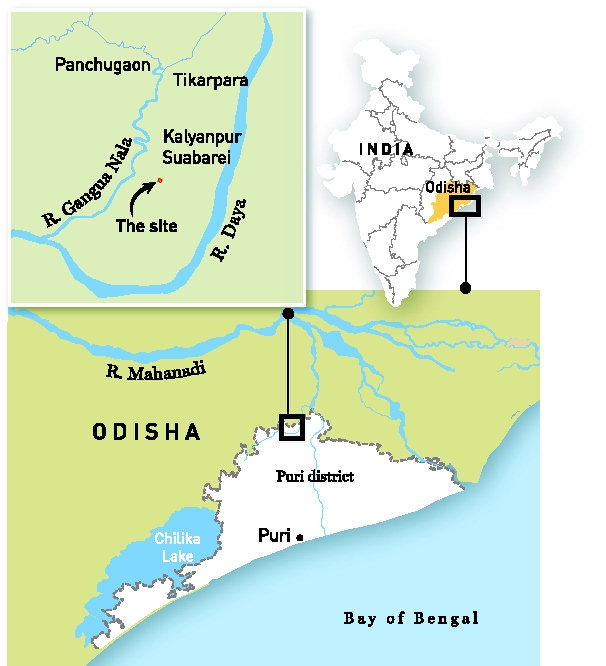The ASI discovers a separate Neolithic phase for the first time in Odisha’s prehistory, followed by a clear-cut Chalcolithic horizon, in its excavations at Suabarei in Puri district. The two levels are separated by a gap of one metre that indicates 600 years of unexplained non-occupation. By T.S. SUBRAMANIAN
Recent excavations by the Archaeological Survey of India (ASI) at Suabarei in Odisha’s Puri district have solved a few riddles surrounding the State’s prehistory and also firmly established its Neolithic past and Chalcolithic history. Importantly, the excavations, done in 2014-15 and 2015-16, yielded a Neolithic horizon for the first time in Odisha, with a gap of one metre separating it from the Chalcolithic stratigraphy, unlike in other sites in the State where the two are mixed up.
Scientific analysis at the site dated the Neolithic period to around 1750 BCE (3,750 years before the present) and the Chalcolithic period to circa 1215 BCE (3,200 years before the present). Significantly, Suabarei’s Neolithic past bridges the gap between the Mesolithic and the Chalcolithic pasts of Odisha.
Jeeban Kumar Patnaik, Superintending Archaeologist, Excavation Branch-IV, Bhubaneswar, and director of the excavation, was ecstatic about the finds. He said: “The excavations have proved that Suabarei was an important Neolithic-Chalcolithic site between the Daya river and the Gangua rivulet. It represents a rural, agro-pastoral settlement. The people who lived there belonged to the transition period from hunting-gathering to farming. This is evident from the charred animal bones, fish bones, copper fish hooks and charred grains found in the trenches. Presence of carnivorous canine teeth indicates the hunting of wild animals. The finding of fluted cores and chert blades shows the prevalence of some sort of lithic industry.”
The discovery of crude, coarse, gritty, hand-made pottery at the lowest level in trenches that belonged to the Neolithic horizon indicated that wheel-made pottery was yet to be introduced there. Besides, chisels made of basalt/dolerite stone belonging to the Neolithic period were found. The upper levels yielded painted, polychrome pottery made by wheel belonging to the Chalcolithic period. Circular huts with no post-holes were also found at the Chalcolithic horizon.
Follow this link From FrontLine to see all the pictures of excavation

